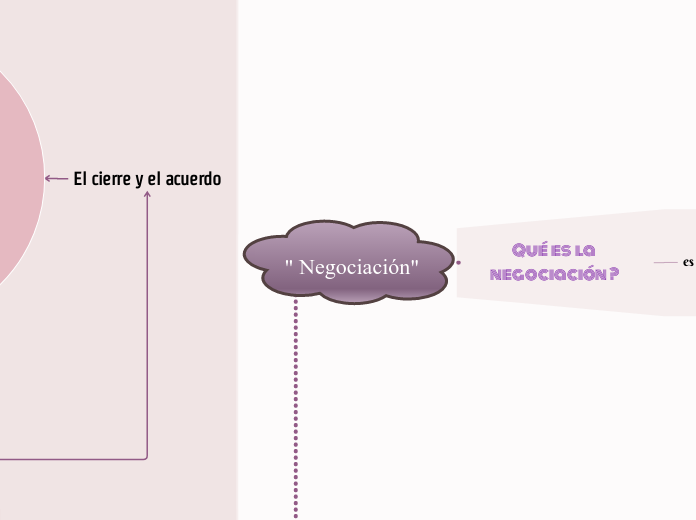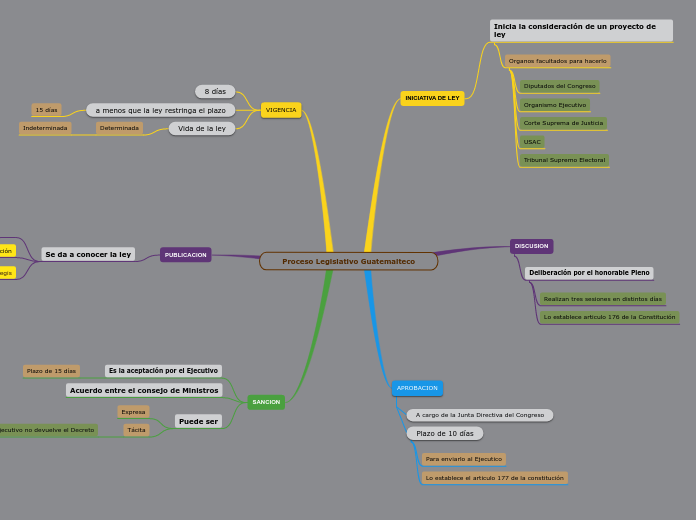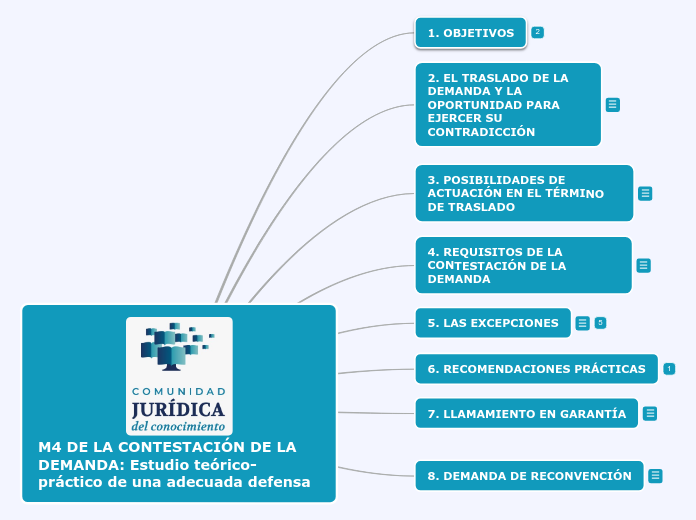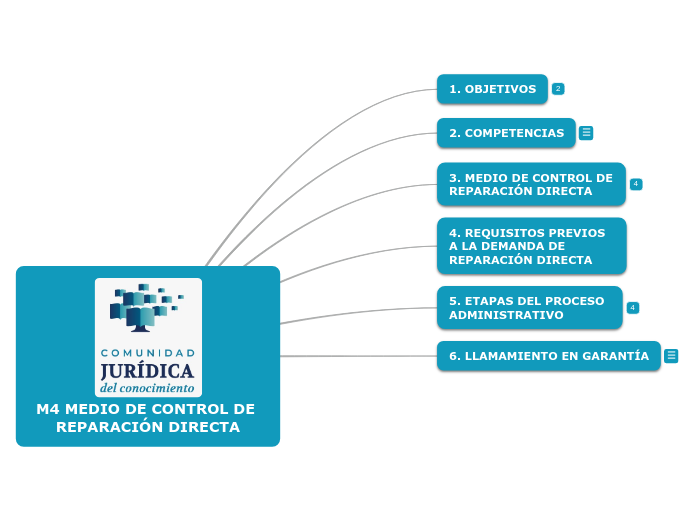Elementos
There are four Present tenses:
- Present Simple
- Present Continuous
- Present Perfect
- Present Perfect Continuous
Criterios
Compromisos
Present Perfect Continuous is used:
- to describe an action that started in the past and has continued up to the present
- to describe an action that has just finished
Some adverbs used with Present Perfect Continuous:
- always
- only
- never
- ever
- still
- just
Structure:
Have/ has + Subject + been Verb-ING?
e.g. How long has he been learning German?
Type in your own examples or you can also choose from the examples below.
Form of word "to be":
Have I been being?Have you been being?Has he/she/it been being?Have we been being?Have you been being?Have they been being?
Form of word "to have":
Have I been having?Have you been having?Has he/she/it been having?Have we been having?Have you been having?Have they been having?
Structure:
Subject + haven’t/hasn’t been + Verb-ING
e.g. She hasn’t been playing tennis for a long time.
Type in your own examples or you can also choose from the examples below.
Form of word "to be":
I have not been beingYou have not been beingHe/She/It has not been beingWe have not been beingYou have not been beingThey have not been being
Form of word "to have":
I have not been havingYou have not been havingHe/She/It has not been havingWe have not been havingYou have not been havingThey have not been having
Structure:
Subject + have/ has been + Verb-ING
e.g. They have been learning French for two years.
Type in your own examples or you can also choose from the examples below.
Form of verb 'to be':
I have been beingYou have been beingHe/She/It has been beingWe have been beingYou have been beingThey have been being
Form of verb 'to have':
I have been havingYou have been havingHe/She/It has been havingWe have been havingYou have been havingThey have been having
Opciones
Present Perfect is used for:
- an action that occurred at a time which is indefinite and has its effect on the subject
- an action that occurred many times and has the possibility to occur in the present/future
- an action that began in the past and is still going on in the present
Some adverbs used with Present Perfect:
- just
- already
- yet
- for
- never/ever
- up to now
Structure:
Have/ has +Subject+ Past Participle?
e.g. Has she finished the letter?
Type in your own examples or you can also choose from the examples below.
Form of word "to be":
Have I been?Have you been?Has he/she/it been?Have we been?Have you been?Have they been?
Form of word "to have":
Have I had?Have you had?Has he/she/it had?Have we had?Have you had?Have they had?
Structure:
Subject + haven’t (have not)/ hasn’t (has not) + Past Participle
e.g. She hasn’t finished the letter.
Type in your own examples or you can also choose from the examples below.
Form of word "to be":
I have not beenYou have not beenHe/She/It has not beenWe have not beenYou have not beenThey have not been
Form of word "to have":
I have not hadYou have not hadHe has not hadWe have not hadYou have not hadThey have not had
Structure:
Subject + have/ has + Past Participle (3rd Form of the Verb)
e.g. She has finished the letter.
Type in your own examples or you can also choose from the examples below.
Form of verb 'to be':
I have beenYou have beenHe/She/It has beenWe have beenYou have beenThey have been
Form of verb 'to have':
I have hadYou have hadHe/She/It has hadWe have hadYou have hadThey have had
Intereses
Present Continuous is used to indicate the ongoing time (now).
Some adverbs used with Present Continuous:
- now, right now
- at this moment
- at the moment
- continually
- perpetually
- this year
- this season
- forever
Interrogative form
Structure:
BE + Subject + Verb-ING?
Are you eating now?
Type in your own examples or you can also choose from the examples below.
Form of word "to be":
Am I being?Are you being?Is he/she/it being?Are we being?Are you being?Are they being?
Form of word "to have":
Am I having?Are you having?Is he/she/it having?Are we having?Are you having?Are they having?
Negative form
Structure:
Subject + BE not + Verb-ING
e.g. You are not eating now.
Type in your own examples or you can also choose from the examples below.
Form of word "to be":
I am not beingYou are not beingHe/She/It is not beingWe are not beingYou are not beingThey are not being
Form of word "to have":
I am not havingYou are not havingHe/She/It is not havingWe are not havingYou are not havingThey are not having
Affirmative form
Structure:
Subject + BE (am/is/are) + Verb-ING
e.g. You are eating now.
Type in your own examples or you can also choose from the examples below.
Form of verb 'to be':
I am beingYou are beingHe/She/It is beingWe are beingYou are beingThey are being
Form of verb 'to have':
I am havingYou are havingHe/She/It is havingWe are havingYou are havingThey are having
Alternativas
Present Simple is used for:
- habits
- general truths
- repeated actions of events
- fixed arrangements/timetables
- feelings/opinions/beliefs
- instructions.
Some adverbs used with Present Simple:
- always
- usually
- seldom
- never
- sometimes
- often
- frequently, generally
- habitually, occasionally
- once, twice
El acuerdo se alcanza en base de alternativas para que
Structure:
Subject (I, You, We, They) + V1(First Form of Verb)
e.g. I usually go jogging at weekends.
Subject (He, She, It)+ V1(First Form of Verb) + s/es
e.g. She writes every day.
Examples
Type in your own examples or you can also choose from the examples below.
Form of verb "to be":
I amYou areHe/she/it isWe areYou areThey are
Form of verb "to have":
I haveYou haveHe/she/it hasWe haveYou haveThey have
" Negociación"
Tenses demonstrate the time of actions centered around the subject of the sentence. These actions are called verbs and change according to tenses.
Etapas
There are four Future tenses:
- Future Simple ('with Will' and 'with Going to')
- Future Continuous
- Future Perfect Simple
- Future Perfect Continuous
Simple
Future Simple is used:
- to predict an event in the future
- to invite
- to give orders
- to express willingness
- for actions that have not yet occurred but that will occur at a future date
final
'Going to' Future is used:
- to talk about our future intentions and plans
- for commands
Some adverbs used with 'Going to' Future:
- later
- tonight
- tomorrow
- next week
- next month
- next year
El cierre y el acuerdo
Structure:
BE + Subject + going to + Infinitive Form of Verb?
e.g. Are you going to read the whole book over the weekend?
Como es lógico, la finalidad del cierre es llegar a un acuerdo. Al igual que cuando hablábamos del cierre en la venta, también en la negociación debe hacerse en forma segura y con firmeza, y para que sea aceptado debe satisfacer un número suficiente de las necesidades de la otra parte. En cualquier caso y al igual que en la venta, existen dos tipos de cierre:
Type in your own examples or you can also choose from the examples below.
Form of word "to be":
Am I going to be?Are you going to be?Is he/she/it going to be?Are we going to beAre you going to be?Are they going to be?
Form of word "to have":
Am I going to have?Are you going to have?Is he/she/it going to have?Are we going to haveAre you going to have?Are they going to have?
Cierre con resumen. Después del cierre con concesión, es el tipo de cierre de negociación más utilizado. Al terminar la fase de intercambio se hace un resumen de todos los acuerdos alcanzados hasta el momento, destacando las concesiones que hemos hecho por nuestra parte y subrayando lo ventajoso de llegar a un acuerdo sobre los puntos pendientes.
Cierre por concesión. Es la forma más frecuente en las negociaciones; equivale a terminar la fase de intercambio ofreciendo una concesión para conseguir un acuerdo.
El intercambio
Structure:
Subject + BE not + going to + Infinitive Form of Verb
e.g. He isn't going to spend his vacation in Hawaii.
Esta fase es la más intensa de todo el proceso de negociación y exige una gran atención por ambas partes, ya que en ella se trata de obtener algo a cambio de renunciar a otra cosa. Cualquier propuesta o concesión debe ser condicional, es decir, por todo lo que se concede debe obtenerse algo a cambio.
Type in your own examples or you can also choose from the examples below.
Form of word "to be":
I am not going to beYou are not going to beHe/She/It is not going to beWe are not going to beYou are not going to beThey are not going to be
Form of word "to have":
I am not going to haveYou are not going to haveHe/She/It is not going to haveWe are not going to haveYou are not going to haveThey are not going to have
Las Propuestas
Structure:
Subject + BE (am/is/are) + going to + Infinitive Form of Verb
e.g. She’s going to be a professional dancer when she grows up.
Son aquello sobre lo que se negocia, no se negocian las discusiones, aunque las propuestas puedan ser objeto de discusión. Se sale de la discusión por una señal que conduce a una propuesta, es decir, a una oferta o petición diferente de la posición inicial; deben evitarse en las primeras propuestas las ofertas arriesgadas, debiendo ser éstas cautelosas y exploratorias pues, en todo caso, se desarrollarán más adelante y es probable que sean aceptadas. En una propuesta se establecen procedimientos que les permitirán lograr sus objetivos a ambas partes negociadoras.
Type in your own examples or you can also choose from the examples below.
Form of verb 'to be':
I am going to beYou are going to beHe/She/It is going to beWe are going to beYou are going to beThey are going to be
Form of verb 'to have':
I am going to haveYou are going to haveHe/She/It is going to beWe are going to beYou are going to beThey are going to be
inicio
Future Simple with 'will'' is used:
- to predict the future
- for something with absolute certainty
- when we're talking about a decision at the moment of speaking
- promises, requests, refusals, offers
- future facts
Some adverbs used with Future Simple:
- tomorrow
- next week
- next month
- next year
Las señales
Structure:
Will + Subject + V1(First Form of Verb)?
e.g. Will you see Mary when she comes back from Denmark?
En la negociación las posiciones van moviéndose, unas veces acercándose y otras, por el contrario, distanciándose. La señal es un medio que utilizan los negociadores para indicar su disposición a negociar sobre algo, es un mensaje que ha de ser interpretado por el que lo recibe; frecuentemente las afirmaciones que se hacen en las primeras fases de la negociación son de naturaleza absoluta.
Type in your own examples or you can also choose from the examples below.
Form of word "to be":
Will I be?Will you be?Will he/she/it be?Will we be?Will you be?Will they be?
Form of word "to have":
Will I have?Will you have?Will he/she/it have?Will we have?Will you have?Will they have?
La Discusión
Structure:
Subject + Won’t (will not) + V1(First Form of Verb)
e.g. You won’t see Mary when she comes back from Denmark.
Esta fase es la parte central y probablemente la más difícil del proceso de negociación. En ellas se intenta acercar lo más posible el acuerdo final a nuestra posición. Para ello se utilizan argumentos que refuercen y apoyen nuestras tesis y otros que debiliten la fuerza las tesis contrarias. Es también la parte más compleja del proceso negociador, pues en ella se utiliza casi todo el arsenal posible: sugestión, persuasión o disuasión.
Type in your own examples or you can also choose from the examples below.
Form of word "to be":
I will not beYou will not beHe/She/It will not beWe will not beYou will not beThey will not be
Form of word "to have":
I will not haveYou will not haveHe/She/It will not haveWe will not haveYou will not haveThey will not have
La preparación
Structure:
Subject + Will + V1(First Form of Verb)
e.g. I will see Mary when she comes back from Denmark.
La preparación de la negociación es una actividad interna del grupo negociador que se desarrolla mediante sesiones de trabajo dirigidas a esclarecer la tarea, dominar el tema de negociación, buscar la información necesaria y definir los roles, de manera que cada uno de los integrantes del equipo conozca los aspectos generales de la negociación y las particularidades de su participación, para lograr con ello, una mayor coherencia e integración del grupo.
Type in your own examples or you can also choose from the examples below.
Form of verb 'to be':
I will beYou will beHe/She/It will beWe will beYou will beThey will be
Form of verb 'to have':
I will haveYou will haveHe/She/it will haveWe will haveYou will haveThey will have
Qué es la negociación ?
es
Es un proceso de intercambio de información y compromisos en el cuál dos o más partes,









